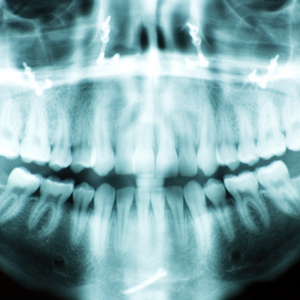Our state-of-the-art facility is equipped with the most advanced technology available. We offer digital x-Rays, intra-oral cameras, diagnostic lasers, and Virtuoso Light from Rembrant as the whitening procedure preferred by cosmetic dentists.

Traditionally, dentists use x-rays to find out what's going on below the surface, developing them in a darkroom full of chemicals, and examining the resulting films on a special light board.
Digital radiography entirely outmodes that cumbersome process. Now, a tiny sensor placed in the mouth acts like a miniature VCR camera with an x-ray sensitive chip, exposing you to 50%-90% less radiation exposure than with traditional x-ray techniques. The resulting highly detailed image of your mouth is almost instantaneously translated onto our computer screen, carrying with it all the conveniences of other digitized images. We can rotate it, magnify it, adjust it for contrast, and even color-code it for educational purposes. Because it helps our patients clearly understand the root issues behind their dental health, we're able to work together to determine the very best treatment options for each case.

This wonderful new technology allows you to relax in your chair while simultaneously observing a real-time pictures of the inside of your mouth magnified beyond normal size on an adjacent computer monitor! Not only does this make it simple to see and understand what the doctor is telling you, but it makes it simple for us to keep incredibly accurate records from one visit to the next.
Our office uses state of the art sterilization to ensure patient safety. Sterilization and disinfection are the basic steps in instrument processing and surface asepsis. Sterilization refers to the use of a physical or chemical procedure to destroy all forms of microorganisms, including the highly resistant spores.
We use Rapid Steam Autoclave at 275º F(35psi), for 15-20 minutes
First, the instruments are prepared for the sterilization process. Patient debris and fluids are removed by placing the instruments in 3.2% glutaraldehyde for 40 minutes. Following this pre-disinfection step the instruments are transferred to an ultrasonic cleaner for another 15 minutes. Then the instruments are rinsed, dried, placed in self sealing sterilization pouches and sterilized in the autoclave. Instruments which can not be heat sterilized, are immersed in 2% glutaraldehyde for 10 hours to cold sterilize.
We use Biological, Chemical and Mechanical indicators to monitor our sterilization process.
Using bacterial spores to monitor the sterilization process is referred to as biologic monitoring (or spore-testing), and the bacterial spores used for monitoring the sterilization process are referred to as biologic indicators (BIs). Of the three methods, biologic monitoring is regarded as the most valid for monitoring the sterilization process, for it uses live, highly resistant bacterial spores.
We biologically monitor our sterilizer once a week to ensure complete sterilization using spore strips and keep accurate records for our monitoring. These strips are enclosed in a glassine envelope and processed through the sterilizer. They are then sent to our spore testing center where they are tested for live spores.
Chemical monitoring involves using chemical indicators (CIs) that change color or form when exposed to specific high temperatures or to the sterilizing conditions within a sterilizer. This is referred to as chemical monitoring (or process monitoring). We use sterilization pouches that have special marking that change color when subjected to sterilizing temperatures.
Mechanical monitoring involves observing and recording the physical aspects (e.g., temperature, pressure or time) of the cycle when the sterilizer is being operated. Our Sterilizer is serviced regularly to ensure proper functioning.
| Monday | Closed | |
| Tuesday | 9:00 AM | 5:00 PM |
| Wednesday | 9:00 AM | 5:00 PM |
| Thursday | 10:00 AM | 7:00 PM |
| Friday | 9:00 AM | 5:00 PM |
| Saturday | 9:00 AM | 5:00 PM |
| Sunday | Closed | |